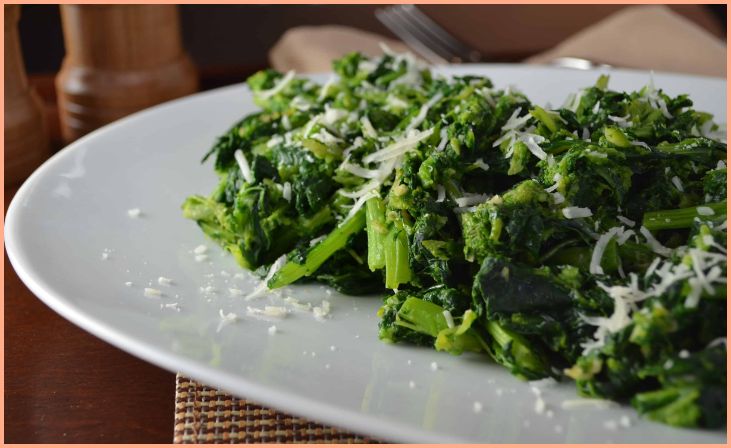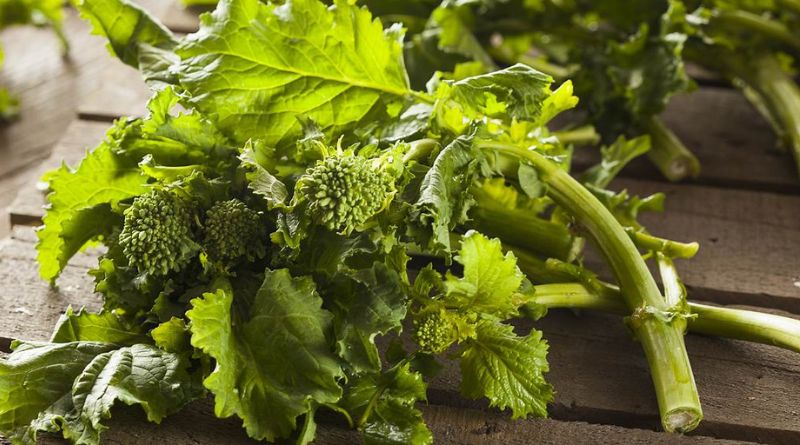Embark on a culinary journey as we unravel the mysteries of rapini, a vibrant and nutrient-packed cruciferous vegetable that often goes by various names, including broccoli rabe. In this exploration, we delve into the origins and characteristics of rapini, demystifying its unique flavor profile and distinctive appearance. Beyond its culinary allure, we will guide you through mastering the art of cooking rapini, offering tips and techniques to elevate your dishes.
As we savor the culinary delights, we won’t overlook the health benefits that make rapini a standout in the world of greens. Packed with vitamins, minerals, and antioxidants, rapini brings not only robust flavors to your plate but also a host of nutritional advantages. Join us on this gastronomic and informative journey, unlocking the secrets of rapini and discovering how it can become a delicious and healthful staple in your kitchen.
What is Rapini?
Rapini, also known as broccoli rabe or broccoli raab, is a leafy green vegetable that belongs to the Brassica family, which includes cabbage, Brussels sprouts, and kale. Despite its name, rapini is not actually a type of broccoli, but it does share some similarities with it. This vegetable has a slightly bitter and nutty flavor profile, and its edible leaves, buds, and stems are commonly used in various culinary dishes.
Rapini is characterized by its clusters of small, broccoli-like florets and leafy greens. While it may resemble broccoli, it has thinner stems, smaller florets, and leafier greens. It is widely utilized in Mediterranean and Italian cuisines, where it is often sautéed with garlic and olive oil or incorporated into pasta dishes and stir-fries. Due to its distinct taste and texture, rapini serves as a versatile ingredient that adds a unique and flavorful touch to a variety of savory dishes.
Also Read: Health Benefits of Swimming
7 Health Benefits Of Rapini

After learning what is Rapini, here are 7 health benefits of Rapini. Rapini, or broccoli rabe, offers a host of health benefits due to its rich nutritional profile. Here are seven key health benefits associated with consuming this nutrient-packed vegetable:
- Nutrient-rich: Rapini is a powerhouse of essential vitamins and minerals, including vitamins A, C, and K, as well as potassium, calcium, and iron. These nutrients play crucial roles in supporting overall health and well-being.
- Antioxidant properties: Packed with antioxidants such as lutein, zeaxanthin, and beta-carotene, rapini helps combat oxidative stress and reduce the risk of chronic diseases by neutralizing harmful free radicals in the body.
- Bone health: The high vitamin K content in rapini contributes to bone health by aiding in the regulation of calcium absorption and promoting bone mineralization, thus reducing the risk of osteoporosis and other bone-related issues.
- Digestive health: With its significant fiber content, rapini supports digestive health by promoting regular bowel movements, preventing constipation, and fostering a healthy gut microbiome.
- Heart health: The combination of fiber, antioxidants, and essential nutrients in rapini may help lower cholesterol levels, regulate blood pressure, and reduce the risk of cardiovascular diseases, thus promoting overall heart health.
- Immune system support: The abundance of vitamins and antioxidants in rapini can help strengthen the immune system, enhancing the body’s ability to ward off infections and diseases.
- Eye health: The presence of lutein and zeaxanthin in rapini contributes to maintaining healthy vision by protecting the eyes from age-related macular degeneration and reducing the risk of cataracts, promoting long-term eye health and function.
Also Read: Pilates Exercises for Sculpted Abs and Strong Arms
How To Cook Delicious Rapini?

After learning what is Rapini, here are the 10 simple steps to cook Rapini. Cooking rapini can be a delightful culinary experience, allowing you to savor its unique flavors and textures. Here is a step-by-step guide on how to cook delicious rapini:
Step 1
Wash the rapini thoroughly under cold water to remove any dirt or debris. Trim off the tough ends of the stems and discard any yellowed or wilted leaves.
Step 2
Bring a large pot of salted water to a boil. Once the water is boiling, add the rapini and blanch it for 2-3 minutes to help reduce its bitterness and soften the stems.
Step 3
Drain the rapini in a colander and immediately transfer it to a bowl of ice water to halt the cooking process and preserve its vibrant green color.
Step 4
In a large skillet, heat olive oil over medium heat. Add minced garlic and sauté until fragrant, being careful not to let it burn.
Step 5
Drain the rapini from the ice water and add it to the skillet with the garlic. Sauté the rapini for 4-5 minutes, tossing it occasionally to ensure even cooking.
Step 6
Season the rapini with a pinch of red pepper flakes, salt, and freshly ground black pepper, adjusting the seasoning to your taste preferences.
Step 7
Squeeze a splash of fresh lemon juice over the rapini to add a bright, citrusy note that complements its natural bitterness.
Step 8
Toss the rapini gently to incorporate the flavors evenly, allowing it to absorb the aromas of the garlic and lemon.
Step 9
Once the rapini is tender and well-coated with the seasoned olive oil and garlic, remove it from the heat.
Step 10
Serve the deliciously cooked rapini as a flavorful side dish or incorporate it into your favorite pasta dishes, stir-fries, or as a topping for pizzas and bruschetta. Enjoy the delightful flavors and nutritional benefits of this versatile cruciferous vegetable.
Also Read: Natural Remedies for Improving Sleep Quality
5 Tips To Include Rapini Into Your Diet
After learning what is Rapini, here are some tips to include Rapini into your diet. Incorporating rapini into your diet can introduce a burst of flavor and a wealth of nutrients. Here are five tips to help you seamlessly integrate this versatile vegetable into your daily meals:
- Sauté with complementary ingredients: Enhance the natural flavors of rapini by sautéing it with garlic, olive oil, and a dash of red pepper flakes. This simple cooking method helps balance its slight bitterness and infuses it with a delightful aroma.
- Mix into pasta dishes: Elevate the nutritional content of your pasta dishes by adding blanched or sautéed rapini to your favorite pasta recipes. Its unique taste pairs well with various pasta sauces and can add a distinctive twist to traditional pasta dishes.
- Include in stir-fries: Introduce rapini to your stir-fry repertoire by combining it with other vegetables, proteins, and savory sauces. Its slightly bitter taste can provide a refreshing contrast to the flavors in your stir-fry, creating a well-balanced and nutritious meal.
- Add to salads: Incorporate raw or lightly blanched rapini into your salads to introduce a fresh and slightly bitter component. Combine it with a mix of other greens, fruits, nuts, and a flavorful dressing to create a vibrant and nutrient-packed salad.
- Use as a pizza topping: Experiment with using rapini as a unique and nutritious topping for homemade or store-bought pizzas. Sauté the rapini with garlic and olive oil before adding it as a flavorful and healthful addition to your pizza creations. Enjoy the combination of textures and flavors that rapini brings to your pizza experience.
Conclusion
From its distinctive taste to its remarkable health benefits, rapini stands as a versatile ingredient that can effortlessly elevate your cooking. With our insightful guide providing you with the best tips and tricks for cooking and incorporating rapini into your diet, we hope you feel inspired to embark on a culinary journey that embraces this wholesome and flavorsome vegetable. Embrace the richness of rapini and savor the nutritional advantages it brings to your table, and elevate your cooking experience with its distinctive taste and versatility.
FAQs
Rapini, also known as broccoli rabe, is a leafy green vegetable that belongs to the Brassica family, closely related to broccoli. With its bitter and nutty flavor profile, rapini adds a unique dimension to various dishes, making it a popular choice in Mediterranean and Italian cuisines.
Incorporating rapini into your diet can be a delightful culinary adventure. Sautéed with garlic and olive oil, roasted with a hint of lemon, or added to pasta dishes and stir-fries, rapini’s distinct flavor can complement an array of savory dishes. Experiment with different cooking methods and flavors to find the perfect match for your taste buds.







